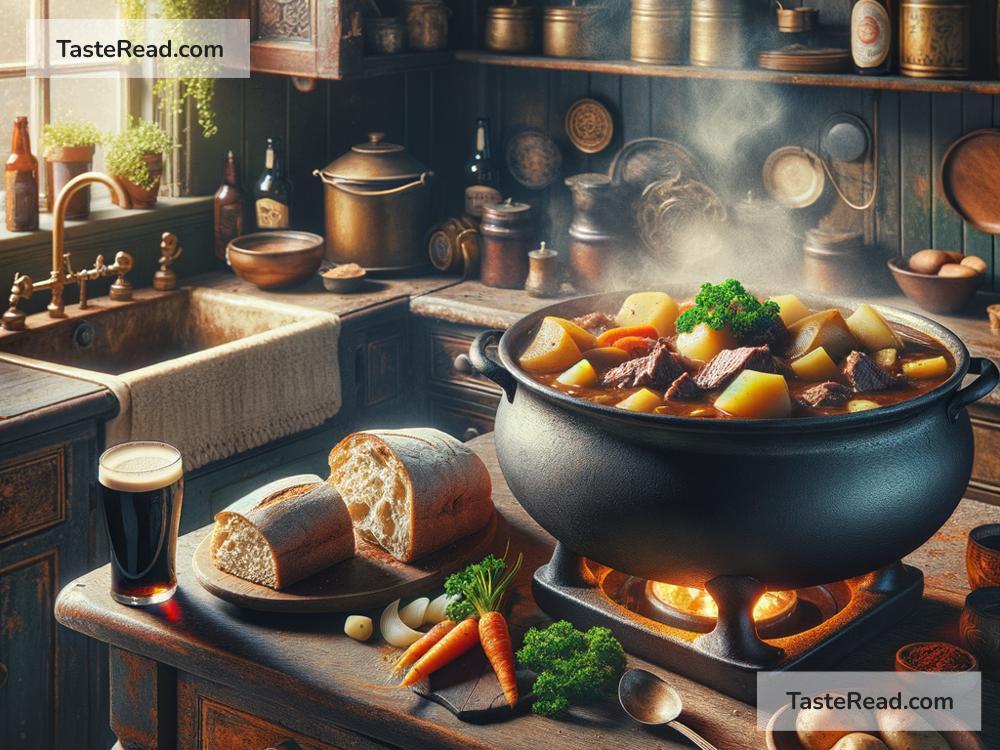How to Prepare a Traditional Irish Stew: A Simple Guide
Irish cuisine is rich with history, and one of its most beloved dishes is the traditional Irish stew. This hearty and flavorful dish has been enjoyed for centuries, especially during cold months when comfort food is a must. Made with simple ingredients and a lot of love, Irish stew is the perfect meal to share with family and friends. In this blog, we’ll guide you step by step through preparing an authentic Irish stew, using everyday ingredients and easy instructions.
What is Irish Stew?
Irish stew is a classic dish made from lamb or mutton, potatoes, carrots, onions, and herbs. These are simmered together to create a rich, filling meal. Traditionally, it was made using affordable, locally available ingredients, making it popular among farmers and families. Over time, Irish stew has become a symbol of Ireland’s culinary history and heartwarming hospitality.
Ingredients You’ll Need
For a traditional Irish stew, here’s what you’ll need:
- Meat: 1.5–2 pounds (700–900 grams) of lamb or mutton, preferably shoulder cuts. Some people use beef as an alternative.
- Potatoes: 4–5 medium-sized potatoes (about 1 pound/500 grams). Choose starchy potatoes like russet or Yukon gold.
- Carrots: 3–4 large carrots.
- Onions: 2 medium-sized onions.
- Stock: 4 cups (1 liter) of beef or lamb stock (you can use water if you don’t have stock).
- Seasoning: Salt, pepper, and fresh parsley. Other optional herbs include thyme and bay leaves.
- Oil or Butter: For browning the meat.
Optional Extras:
– Leeks or celery for extra flavor.
– Pearl barley or a bit of flour to thicken the stew.
Step-by-Step Instructions
Follow these simple steps to make your Irish stew.
- Prepare Your Ingredients.
- Wash and peel the potatoes, carrots, and onions. Cut the potatoes into large chunks, the carrots into thick slices, and the onions into rough wedges.
- If you’re using celery or leeks, chop them into bite-sized pieces.
-
Trim any excess fat from the meat, but don’t remove it all—it adds flavor! Cut the lamb or mutton into medium-sized cubes.
-
Brown the Meat.
- Heat a large pot or Dutch oven over medium heat and add a tablespoon of oil or butter. Once hot, add the meat and cook until browned on all sides. Browning the meat helps seal in the flavor and gives the stew a deeper, richer taste.
-
Remove the meat from the pot and set it aside.
-
Cook the Onions.
-
In the same pot, add the onions and sauté them until they soften and turn golden. This step builds a nice base for your stew.
-
Assemble the Stew.
- Return the browned meat to the pot. Then, layer the potatoes and carrots on top of the meat. Add any other vegetables, such as leeks or celery, if you’re using them.
-
Pour in the stock until the ingredients are just covered. If using water instead of stock, add a teaspoon of salt for flavor. For extra richness, throw in a bay leaf or a sprig of thyme.
-
Bring to a Simmer.
-
Heat the pot over medium-high until the liquid starts to boil gently. Reduce the heat to low, cover the pot with a lid, and let it simmer. This slow cooking process helps the flavors meld together and makes the meat wonderfully tender.
-
Let It Cook.
-
Irish stew typically cooks for about 1.5–2 hours. Stir it occasionally to prevent sticking, but try not to disturb the layers too much. About halfway through, you can check if the potatoes are soft; if so, they’ll begin to thicken the stew naturally.
-
Adjust Seasoning at the End.
-
Taste your stew and add more salt, pepper, or herbs as needed. If you want a thicker stew, you can mash a few pieces of potato or stir in a tablespoon of flour mixed with water.
-
Serve and Enjoy!
- Sprinkle fresh parsley on top before serving for a burst of color and flavor. Irish stew is best enjoyed hot, served with rustic bread or soda bread to soak up the broth.
Tips for the Best Irish Stew
- Pick the Right Meat: Lamb or mutton gives the most authentic flavor, but beef works beautifully as well if that’s easier to find.
- Keep It Simple: Stick to basic ingredients, as Irish stew is meant to highlight the wholesome taste of each element.
- Go Low and Slow: Letting the stew cook slowly ensures the meat becomes tender and the flavors deepen.
Final Thoughts
Making Irish stew is not just about cooking a meal—it’s about keeping a tradition alive. Each spoonful is a taste of Ireland’s history and culture, passed down through generations. The best part? This simple dish is packed with nutrition and warmth, perfect for gathering around the dinner table with loved ones.
So why not give it a try? Whether you’re celebrating St. Patrick’s Day or simply craving a hearty, homemade meal, this easy Irish stew recipe will leave you feeling full, happy, and connected to the cozy kitchens of Ireland.


